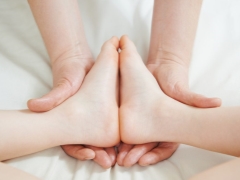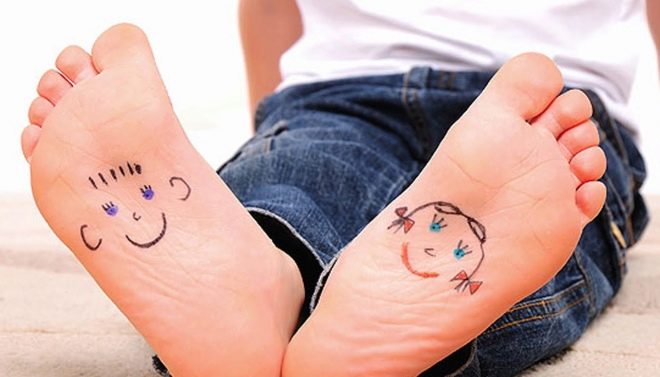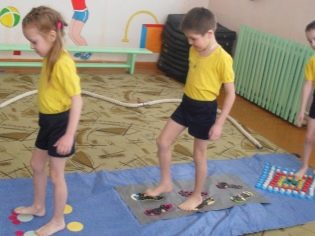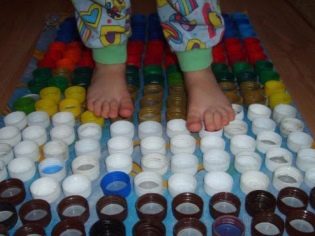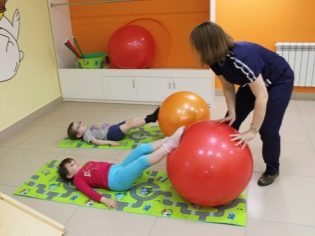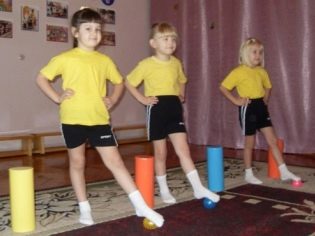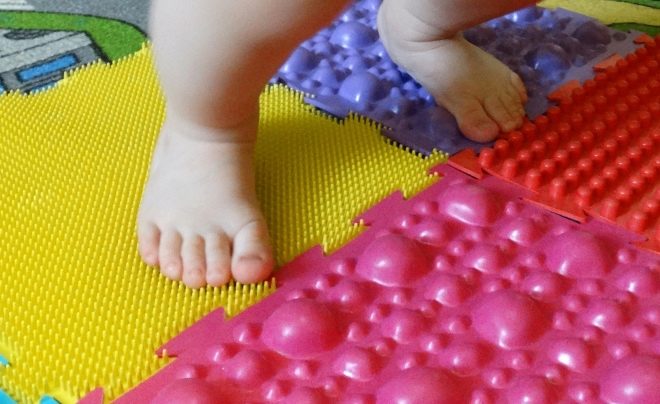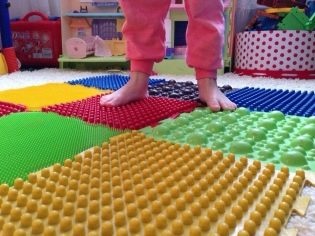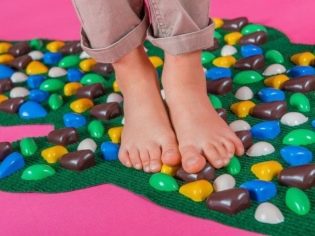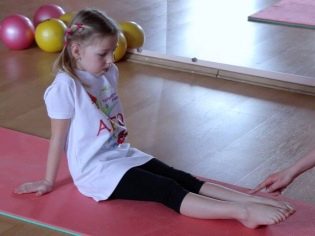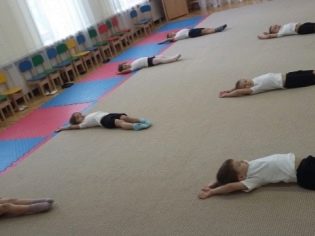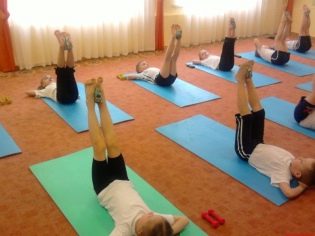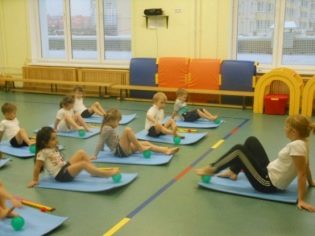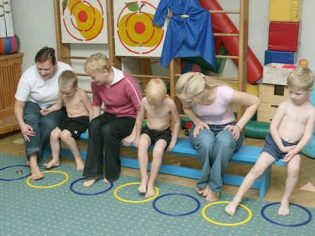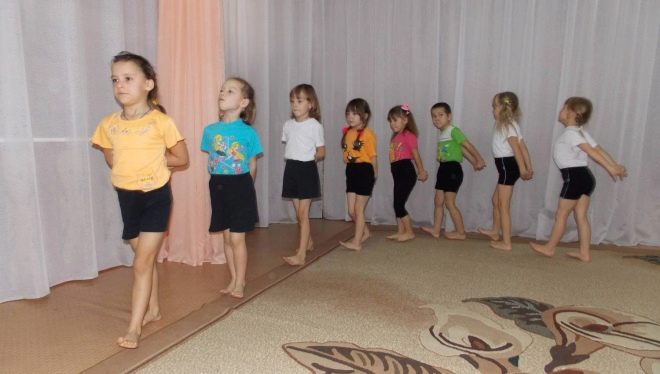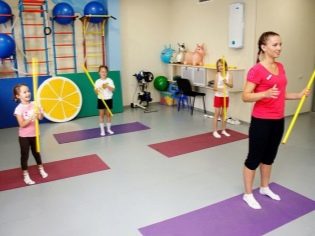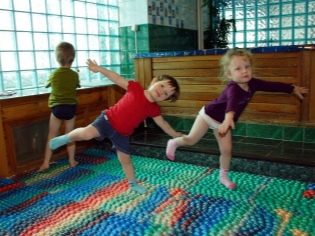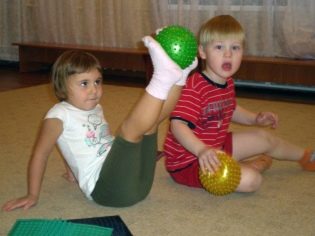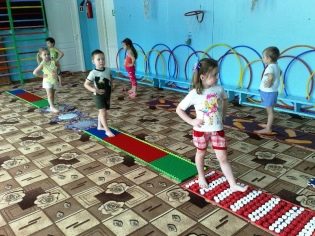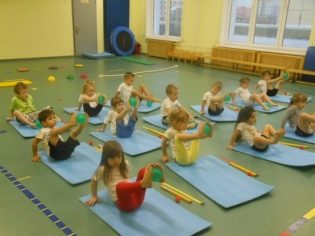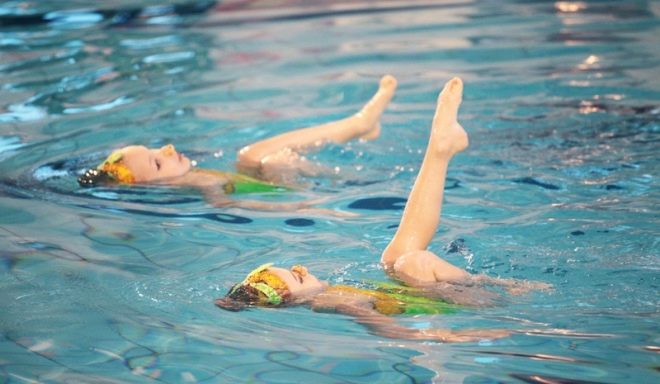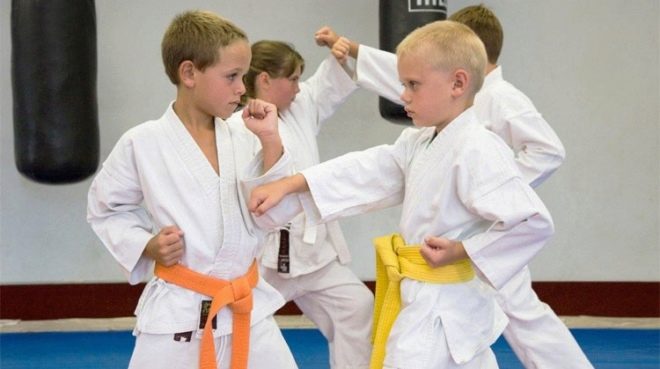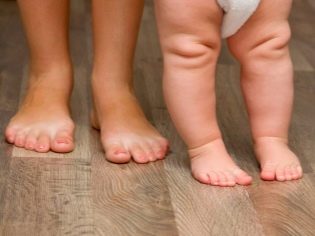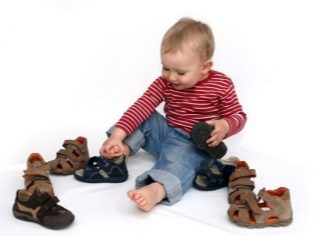A set of exercises for flatfoot in children
Physical therapy and gymnastics are an integral part of treatment for flat feet. Convenience lies in the fact that the child can do at home, to achieve the result does not necessarily attend expensive procedures. How to conduct classes for the child, we will tell in this article.
What is it for
Exercise therapy, i.e., a physical-fitness complex for flat-footedness, is always part of the combined conservative treatment.
More than 80% of cases of children's flatfoot can be corrected due to the gentle effect, without surgery.
With longitudinal and transverse flat-footedness, as well as with a combined deformation of the foot 1-2, and sometimes 2-3 degrees, doctors begin treatment with a complex treatment. It includes massage, manual therapy, wearing orthopedic shoes recommended by an orthopedic surgeon, as well as gymnastics.
Gymnastic orthopedic exercises can strengthen the muscles of the feet, tendons, and ankle muscles, which helps to correct lung and medium flatfoot.
In severe anomalies, surgical intervention is indicated, but cases of severe foot pathologies are not a common occurrence.
Therefore, we can safely say that physical therapy is one of the foundations of successful correction of flatfoot in the vast majority of cases. The first classes can be against the clinic at the place of residence under the supervision of an experienced instructor - a medical worker, and subsequently perform a set of exercises at home.
Before starting class, you should know that the best results from gymnastics and foot massage can be obtained at the age of 7 to 15, the best correction is amenable to flat feet in children aged 10 to 12 years.
Longitudinal flatfoot with this effect is treated better than the transverse. The course of treatment is long, you should not expect instant results. According to statistics, the correction requires an average of 2 to 3 years. In some cases, it takes about 5 years of systematic and systematic training.
A universal list of exercises and techniques does not exist, since each child is assigned a specific program of classes, taking into account the degree and type of deformity, the characteristics of the foot. But there are basic exercises that are included in almost all the complexes of physical therapy. We will tell about them in more detail.
What you need to practice
To perform some exercises of the complex more effectively, you will need to have on hand:
- gymnastic stick;
- chair by age;
- tennis ball;
- soft polyurethane foam mat;
- orthopedic massage mat.
Problems and questions can arise only with the last item, because the choice of such products in stores and orthopedic salons is great.
Choosing an applicator mat for treatment, you need to enlist the recommendations of the orthopedic surgeon, who will tell about all the features of the pathology of the child and tell you what kind of mat is best suited for him.
For therapeutic purposes, choose a massage mat from hard materials with pronounced protruding relief or needle-like texture.
Soft and gentle mats are more suitable for the prevention of flatfoot than for treatment.
Perform exercises from a standing position on the applicator (no more than 15-20 minutes a day), and then - on a usual soft rug from polyurethane foam.
Simulators
If the attending orthopedic surgeon permits, parents can purchase a child a simulator or a mini-simulator from flatfoot. Today there is a large selection of both. These are plank-elevated platforms for advancing, and pimply balls for practicing and simultaneously massaging the feet, and round rotating platforms with an uneven surface.
Exercises on simulators should complement the classes, but in no case should not cancel physical therapy as such.
Set of exercises
The complex includes exercises from various positions. It is always recommended to start from those that are made from the prone position:
- Exercise 1. When lying on a soft foam mat, the child needs to pull the socks first to the right, then to the left, then to himself. The final movement will be turning the feet inward, towards each other, as is done with the palms of the clap.
- Exercise 2. When lying down, the child needs to slightly raise his legs so that the heels do not touch the rug, and stretch his toes to the mat. Well, if you can touch them on the surface.
- Exercise 3. In the prone position, the child needs to raise the legs, after which the foot of the left foot should be held on the right, and then change the legs and do the same on the opposite side.
The second part of the complex is performed sitting on the rug:
- Ask the child to stretch the legs and lower in turn and raise the fingers on the left or on the right leg.
- Hands are wrapped around toes. The child bends forward at the same time, and then slowly pulls the feet with his fingers towards him.
- Sitting, ask the child to bend the knees, putting the foot only on the fingers. Slowly lower your heels and spread them, and the socks should not come off the mat.
- The child sitting on the rug should catch a tennis ball with socks. As soon as it works, you need to raise and lower the ball without releasing it.
- Sitting on the rug, the child should roll the ball between the socks and the heel with his feet, bending his knees.
Sitting on a stool (it is important that the furniture was the child's age, that is, the feet when sitting did not dangle in the air, but were confidently touching the floor), the second part of the exercises is performed from a sitting position:
- Exercise 1. Ask the child to take turns to bend and unbend the toes.
- Exercise 2. Ask your child to "write" with his feet in the air as smooth and wide circles as possible. First, it is worth doing clockwise, and then against it.
- Exercise 3. Ask the child to take turns to tear off the rug, then heels, then socks, you can do this "roll" from socks to heels and back.
- Exercise 4. The legs are placed on the outer edge, and from this position it is necessary to smoothly and slowly transfer the feet to a position vertically on the inner edge.
- Exercise 5. The tennis ball is rolled from the right leg to the left, each making several circular movements by lifting the foot on the ball.
It is better to perform exercises in a standing position on a massage orthopedic rug about which it was told above.
The duration of this part of the complex should not exceed 15 minutes:
- Ask the child to walk on the rug first on the toes, and then on the heels.
- On the mat should be like first on the outside of the foot, and then - on the inside.
- Ask the child to roll on the uneven massage surface of the mat from the heels to the toes, and then vice versa.
- Complete all jumps on the mat - applicator.
The second part of the complex in the standing position is performed on a flat surface:
- The child must roll foot gymnastic stick. First - one step forward, and then back. So the whole arch of the foot will be massaged and strengthened.
- Holding the gymnastic stick with your hands across the shoulder blades, fixing the back in a straight position, you need to perform a few squats, while trying not to tear the heels off the floor surface.
- The child, leaning his hands on a gymnastic stick set in front of him in a vertical position, should take turns on his heels - left and right.
It is advisable to perform each exercise of the complex with a plosstopia 7-10 times, classes should be daily.
Age features
Physical therapy is effective in preschool and primary school age, as well as in adolescents up to 15-16 years old, while the foot is still in the formative stage. In older adults, it is often not possible to stop the progression of the disease and to start its reverse development with the help of gymnastics and massage.
The most attentive in physical therapy should be the parents of children. You should not force them to engage in force so as not to discourage the desire forever. Especially it concerns occupations on the applicator.
Gymnastics will require a certain pedagogical flexibility from the parents - if it is painful or difficult now, then you can postpone the exercise until later.
Charging is important to carry out in the form of a game, so that the baby is interested. But with adolescents it is better to choose reverse tactics - only the persistence of the parents and the right motivation will help the young man or girl to cope with the existing problem.
For kids, it is better to start classes from 2-3 minutes a day, gradually increasing the time to 15 minutes. Teenagers can start from 5-6 minutes a day, increasing the load and the time for each exercise gradually, in a couple of weeks to come to the daily 20-25 minute classes.
Permitted forms of physical activity
Many parents are interested in what types of physical activity can additionally help in the correction of flatfoot, and which - only harm. The main question, of course, concerns the exemption from physical education at school. Orthopedists are unanimous in this matter - no release is required, for children with 2–3 degrees of flatfoot, classes in special groups are shown.
Each physical education teacher knows what a special group on flat-footedness is, and will select for the child only those exercises and workloads that will not be harmed and will benefit.
A child with flat feet definitely should not engage in weightlifting, powerlifting, boxing, in which the load on the legs is very large.
Running and especially speed skating and figure skating are strictly contraindicated.
Gymnastics and any sport associated with jumping are not recommended - the load on the spinal column is serious, and a child with impaired depreciation of the foot will take it several times harder. Football and hockey are thus also canceled.
The diagnosis of “flat feet” does not mean that the child is “ordered” to the sport. With deformed feet you can and should go swimming (except for jumping into the water), synchronized swimming.
Classes of martial arts - taekwondo, karate, jiu-jitsu, aikido are very useful. Cycling can help to correct the longitudinal flatfoot in children and adolescents.
Useful tips
Treatment will be more effective if parents adhere to the important rules of successful treatment of flat feet:
- Watch the weight of the child. Excess weight is an additional load on the ankle, knee and hip joints, which are already significantly affected by the flattening of the foot. Food should be balanced, moderately light, not devoid of vitamins and minerals. It is useful to take jelly or aspic as food during treatment - this dish has a positive effect on the formation of cartilage tissue.
- Walking barefoot. Not comfortable home slippers are more useful for feet, but walking barefoot on the floor, carpet, tile. The more varied the surface, the better. Well, if you can let the child walk barefoot on the sand, earth, grass. You should not be afraid that the child will catch a cold; it is impossible to get sick from walking with bare legs even on a very cool surface.Systemic hypothermia may occur in the event that the child will sit on a cold booty.
- Matching the type of footwear with an orthopedist. It is necessary to choose orthopedic footwear only when the orthopedic surgeon tells about it. Self-will in this case can only hurt. Sometimes it is quite enough to wear orthopedic insoles inserted into the most ordinary pairs of shoes.
Heavy and massive orthopedic shoes are shown only for children with serious deformities, as well as after operations on the foot.
And in this case, the doctor makes full recommendations for which a pair of orthopedic shoes is made. It takes into account all the pathological changes in the leg of a particular child.
Physiotherapy
It is best to combine gymnastics for flat feet with massage and physiotherapy. From modern methods, it is possible to discuss with the doctor the so-called taping - the support of certain muscles of the foot with special adhesive tapes.
With tapes it is possible and necessary to do therapeutic exercises, and since tape tapes redistribute the muscular load, the effect of such a “duet” will be more positive and quick.
About what is flatfoot in children and what to do with it, see the next video.
